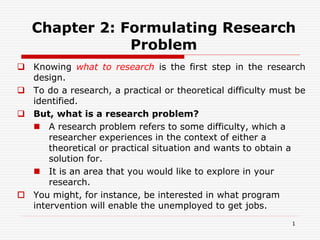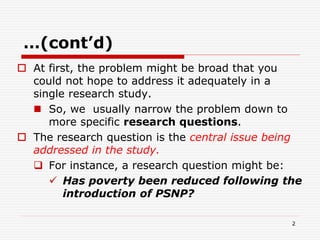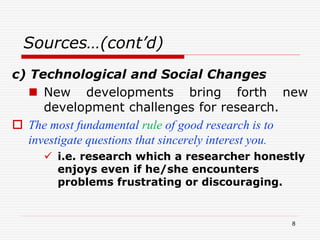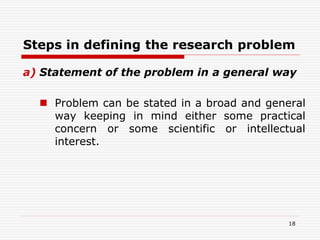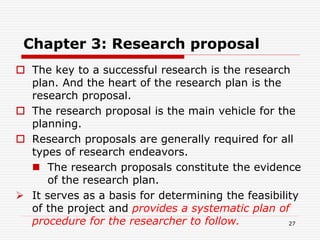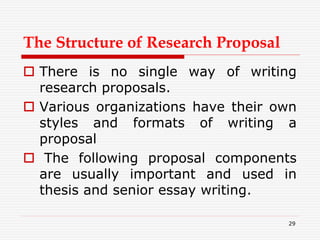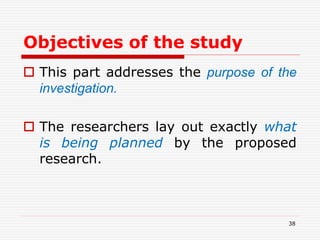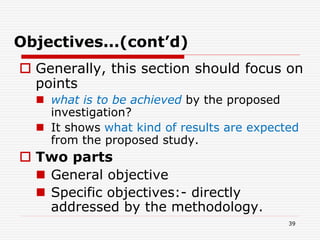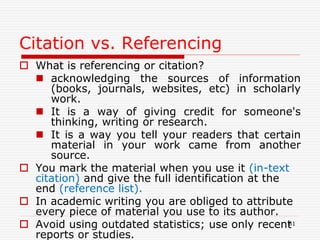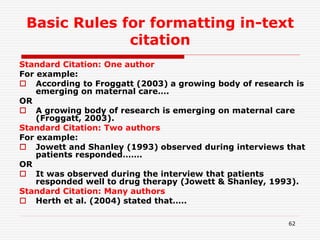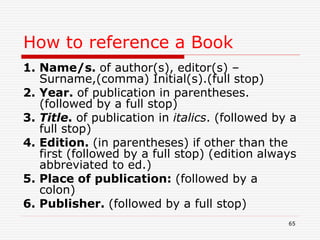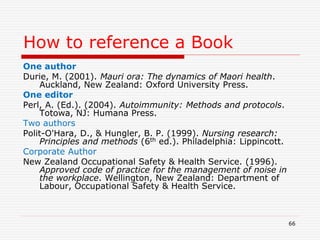The document provides guidance on formulating a research problem and developing an effective research proposal. It discusses identifying a research topic by drawing from professional experience, literature reviews, and social/technological changes. A research problem refers to a difficulty a researcher wants to solve in a theoretical or practical context. Defining the problem clearly involves narrowing its scope and expressing it in specific, measurable terms. Key parts of a research proposal include the title, abstract, background, problem statement, research questions, objectives, hypothesis, methodology, and work plan. The proposal establishes the justification, approach, and intended outcomes of the proposed study.
